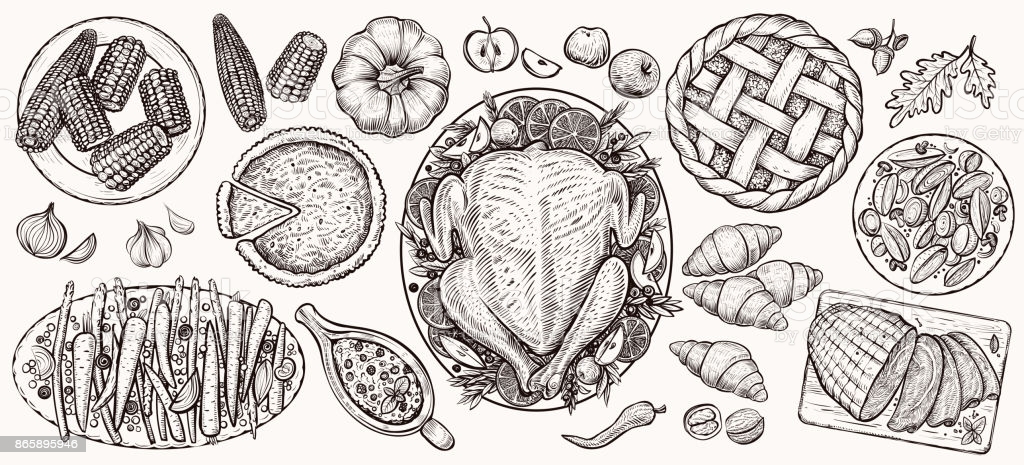In 1620, the pilgrims landed in Plymouth, Massachusetts. During their first winter, half of the original 102 passengers died. At this point, they met a native to the continent and a member of the Patuxet tribe named Squanto. Squanto had been captured by an English sea captain and taken to London where he learned to speak English before escaping. Squanto taught the pilgrims many things that proved key to their survival including how to plant corn. He also helped them make an alliance with the local Wamponoag tribe. When the first corn harvest was successful, the pilgrims held a celebratory feast of thanksgiving and invited a group of members of the Wamonoag tribe including the chief Massasoit.
We do not know exactly what was served at this meal. We do know that William Bradford sent four men “fowling” but we do not know what birds they were hunting. The idea of turkey comes about because of the vast number of turkeys in that region. We also know the Wamponoags brought five deer as a gift to the dinner. Besides this, we can assume they ate many crops and vegetables native to the area. We also understand that there would have been no desserts because the pilgrims lacked any kind of oven.
This meal was not called “Thanksgiving,” but the purpose of it was to give thanksgiving to God for what He had provided them with. This meal was by no means “the first thanksgiving”. It is more likely copied off of some European thanksgiving celebration. The meal set a sort of precedent among the new colonies, and it continued to be celebrated in different places throughout the coming years. After the Revolutionary War, multiple presidents dedicated days of thanksgiving. In 1817, New York became the first state to declare an official day of thanksgiving. Finally, in 1863, at the height of the Civil War, Abraham Lincoln encouraged the last Thursday in November to be a day of thanksgiving and to pray for the ongoing war effort. Since then, except for a few years during the Great Depression, Thanksgiving has been celebrated on the last Thursday in November.
One of the important things to think about when you celebrate a holiday is, what are you actually celebrating? Put simply, Thanksgiving is a national day where we are encouraged to be thankful. We are also celebrating and remembering the meal that the Wamonoag tribe and the Pilgrims shared together. Some people seem to take offense at this second portion of the holiday. The argument seems to be that it is falsely painting Native American and European relations.
When we celebrate thanksgiving we are celebrating the moment of peace: the meal that was shared between two peoples. We are not denying the war between them, or the atrocious acts of violence. It is a day where we give thanks for the peace we do have. This does not mean things are perfect. They are far from that. But I believe it is healthy in the midst of whatever trial or sad event currently controls your life to stop and to be able to be thankful for one thing you have been blessed with.
Sources: Britannica, History.com

